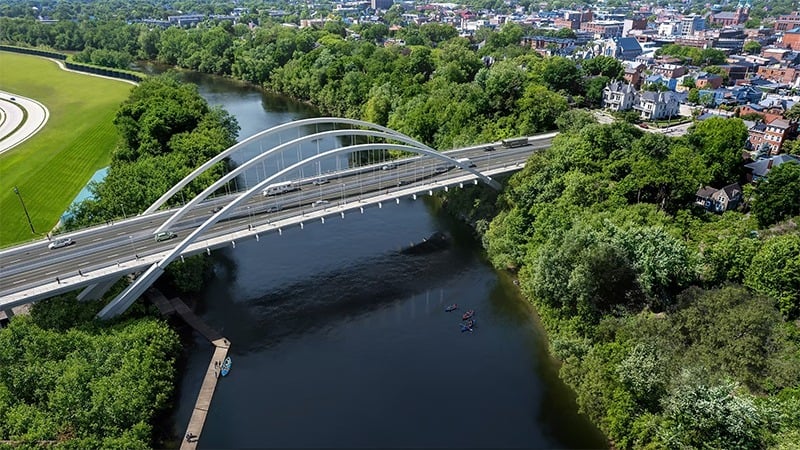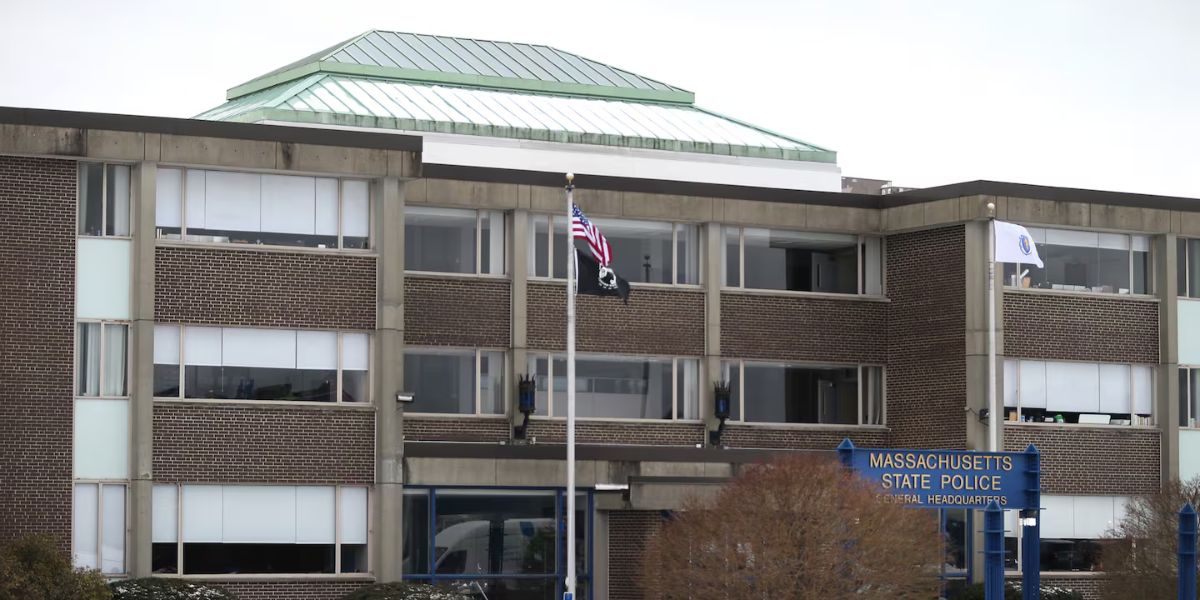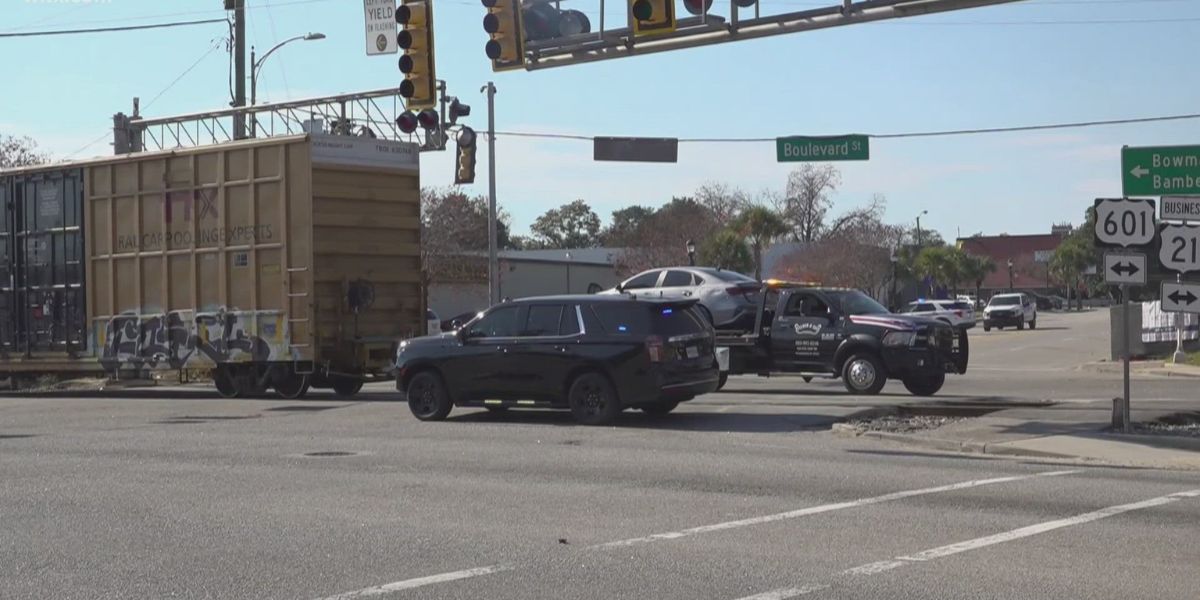The Kentucky Transportation Cabinet on Tuesday unveiled a schedule for building a bridge that would improve and secure the connection between Covington and Newport.
The KY 8 Licking River Bridge timeline prioritizes both providing a new bridge even more quickly and ensuring the safety of all users of the road, including walkers, cyclists, and drivers.
In order to build a replacement bridge, the KY 8 Licking River Bridge will be dismantled in the spring of 2026. It is anticipated that construction will take around two and a half years, and the bridge will be available to traffic again by the summer of 2028. It is anticipated that the project will be finished by the fall of 2028. It is anticipated that utility coordination will start around late 2025.
The bridge was initially supposed to be built in two stages so that cyclists and pedestrians may use the bridge crossing while it was being built. Safety was the primary factor in the decision to remove the bridge following additional examination by the Project Team and feedback from residents and local authorities.
According to Chief District Engineer Bob Yeager of the Kentucky Transportation Cabinet (KYTC), the bridge crossing will be completely closed to prevent bikers and pedestrians from being close to an area that is currently under construction. Furthermore, it is anticipated that closing the bridge will shorten the construction schedule by about a year. Priority one is to expedite the reopening of this crucial bridge crossing.
In the West Newport and East Covington areas, a diversion for drivers and a shuttle service for bicyclists and pedestrians will be necessary when this bridge crossing is closed in the spring of 2026.
Vehicle detour
Between Newport and Covington, drivers will take a detour via the Girl Scout Bridge, KY 1120/11th Street. A driver’s commute is extended by about five minutes due to this diversion.
Drivers should be aware that vehicles over the lower weight restriction will not be able to use the Roebling Suspension Bridge as a detour.
Shuttle service to keep connected
Understanding the vital link the bridge offers to bikers and pedestrians, KYTC is collaborating with the Design-Build Team to make sure those users may travel safely while the bridge is being built.

The shuttle service is designed to give residents of the east Covington and west Newport communities who do not own a car a practical way to get about. The primary goal of this service is to connect these commuters to basic necessities like childcare, jobs, and groceries. Bicycles and wheelchairs will be accommodated by the shuttle service.
The cities of Covington and Newport are working together to design the shuttle service concept. Alongside this partnership, KYTC carried out a number of research to ascertain how and when bikers and pedestrians use the bridge. Together with the city’s cooperation, this input yielded useful information about the best places to stop and how frequently stops are required to make room for the shuttle.
The shuttle service will run from spring 2026 until summer 2028, when the bridge is closed. In the upcoming months, more details regarding the shuttle service will be made available.
Updates to the signature design
In December 2023, the design for the arch bridge was chosen. The PCL/Stantec/Rosales Design-Build Team, hired by KYTC, has spent the last 18 months working on the bridge’s technical design and interacting with Covington and Newport historic representatives and community leaders. Additionally, the project team has altered the pedestrian/bicyclist linkages close to the bridge crossing and improved the Fourth and Garrard Street intersection design.
Vehicle traffic will not be allowed on the 12-foot-wide shared-use pathways on each side of the bridge. Within the bridge arches’ footprint, these trails will provide expansive vistas of the Cincinnati cityscape and connect easily to a wider network of trails in Covington and Newport. These routes will have a framework that complies with the Americans with Disabilities Act (ADA).
In order to find more aesthetically pleasing and useful elements to incorporate into the project, like attractive lighting and planting, KYTC will keep collaborating with the leaders of the local community.
dedication to everyone’s safety
The shared-use pathways will join Fourth Street (KY 8), a newly finished road redesign in Covington. There were two car lanes instead of three on the recently resurfaced route, with one lane reserved for bikes. In order to increase safety on the busy road, the vehicle travel lanes were also narrowed from 12 to 11 feet, a tried-and-true traffic calming method.
The KY 8 Licking River Bridge, which will have two lanes that are 11 feet wide in each direction of travel, will also employ the same traffic calming strategy. By doing this, traffic will slow down and everyone on the road will be safer.
In this instance, Yeager added, “We also collaborated closely with Covington and Newport city leadership to guarantee connectivity with existing and future walking and bicycle paths.”
Updated weight limits will enable the Transit Authority of Northern Kentucky (TANK) to run local and express bus routes on the bridge, enhancing the crucial link for public transportation users, while also offering a safe and aesthetically pleasing crossing for bicyclists and pedestrians.
Next actions
In addition to working with Covington and Newport’s historic officials and community leaders, the Design-Build Team will keep improving the overall design. In the upcoming months, KYTC will give more information regarding the improvements being made to the Fourth and Garrard intersection as well as other shuttle service specifics.
The bridge’s ultimate cost is still up in the air and will rely on how well the concept-Build Team refines the concept.
KY8Bridge.org has further information about the Design Selection and the KY 8 Licking River Bridge Project.
Background of the project
For commuters, walkers, cyclists, and freighters going between Covington and Newport, the KY 8 Licking River Bridge is an essential link. In order to meet the capacity and connectivity demands of the neighboring towns, especially the crossing of TANK buses, which now exceed the weight restriction and must use alternate crossings, the 1936-built bridge needs major upgrades. A replacement bridge is required to accommodate the expanding needs of all travelers utilizing the KY 8 Licking River Bridge crossing, since development is taking place in Covington and Newport.
Starting with a planning study in 2016, KYTC started the KY 8 Licking River Bridge Replacement Project with the main objective of creating a safe and effective crossing for vehicles, public transportation, pedestrians, and bicyclists that will benefit the community for many years to come. Using feedback from several public meetings, an online survey in 2021, and conversations with a project aesthetics committee composed of Covington and Newport historic district representatives and community leaders, the project team created four initial signature design concepts in July 2023. Late in 2023, the arch concept was chosen.
Based on suggestions from a planning study conducted in 2016, the design allows for four lanes of traffic. According to the research, any new construction in Newport or Covington might need four lanes to handle the extra traffic, even though three lanes would have been plenty for the traffic that was already there at the time. Since then, the Ovation site has been developed, and a Margaritaville Resort with 264 rooms is set to be constructed in Newport. Covington has also announced the addition of the OneNKY Center, a 45,000-square-foot office structure that will be constructed at the base of the John A. Roebling Suspension Bridge, and started construction on the former IRS site. Additional capacity is required to support efficient traffic flow since new restaurants, entertainment venues like Ovation’s 7,000-person performance space, office space, and other attractions increase traffic in the neighborhood.
Equally crucial, a four-lane bridge provides adaptability for future transportation applications as the local towns’ mass-transit and vehicle needs grow and change.
Cabinet for Transportation in Kentucky






